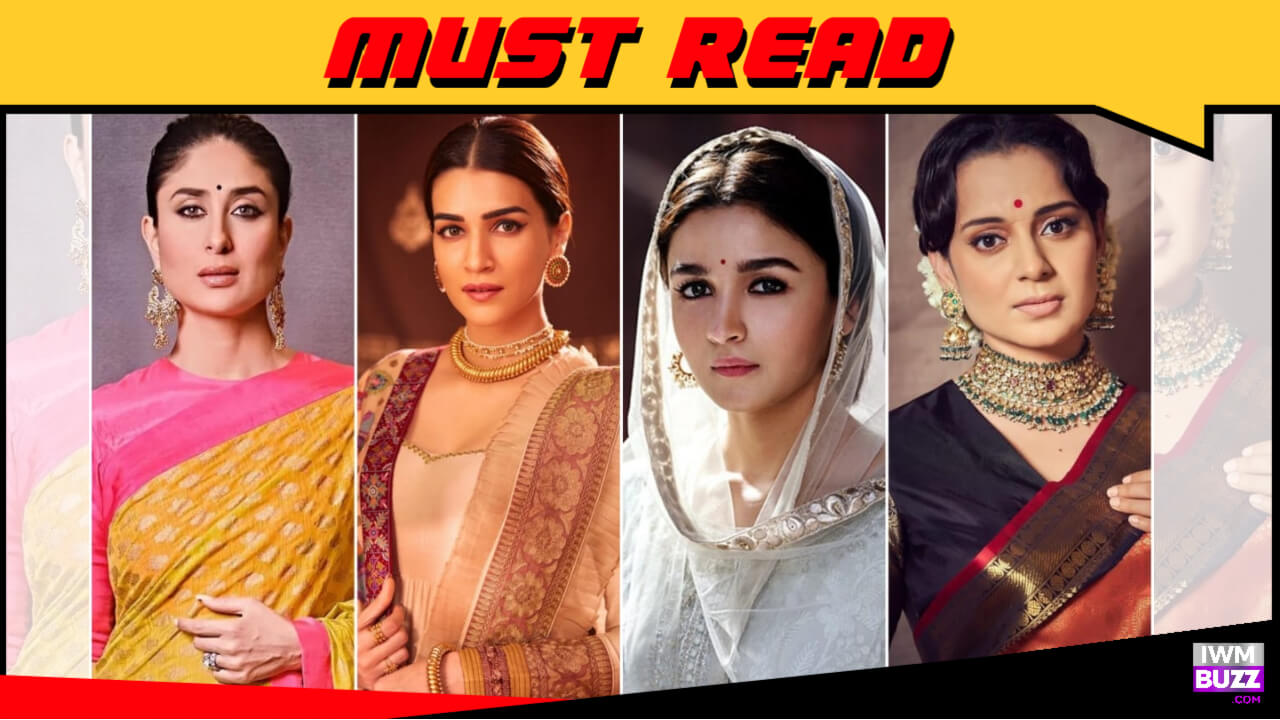It mirrors an epic tragedy in making, that how the character ‘Sita’, through countless epochs, has endured merciless objectification, reduced to nothing more than a coveted “trophy” to be seized and displayed.
And the race continues in the 21st century.
Whether it’s to slip into the ideal character of a woman, Sita holds… Or the woman, a ‘man’ thinks, is a ‘prize’ that he should win or he deserves. The sinister race is regardless of gender; that counts on this fascinating paradox surrounding ‘Sita’.
Amidst the patriarchal tumult, women from all walks of life yearn to paint themselves as Sita within the ‘mansplained-virtues’ she brought in. Perplexing how it starts with the commoners to the highest-paid actresses in the country!
Meanwhile, men, often assuming the role of self-proclaimed mentors, attempt to mould women into replicas of this revered character.
The problem doesn’t end here!
It’s with the commercialisation of the character, commercialisation in terms of ‘art’ and ‘religion’, both.
It’s almost shocking!
This exploitation, driven by profit and devoid of reverence, leaves us reeling with a profound sense of indignation.
It’s something; I realised as the current ‘circus’ (you already know which circus it is) takes on the lead.
… can we not save it?
It is imperative that we embrace the passion and admiration we harbour for them, intimidating those who would dare to tarnish their enduring legacy.
…
By now, you may ask, why do I have to call it a ‘Sita Race?’…
Four Instances:
One
It all started when the world woke up to the news with Kareena Kapoor in the headlines, for she demanded 12 crores for the role ‘Sita.’
Remember how ‘boycott Kareena’ made a trend following that? People even declared it as ‘against humanity’!
A Quora user said, “There are many who can play Sita Mata perfectly. Kareena Kapoor Khan is definitely not one of them. Not because she is Muslim or she married a Muslim or because of her past work but she doesn’t have those innocent and divine looks which are required to play Goddess Sita character.”
Another said, “I don’t understand why this is a surprise any more. People often tend to get outraged at any actress portraying any female character of high virtue from history. Or even fantasy for that matter.” (the only sane opinion I could find)
I ask you a question; could you recall if there was any talk in the town of the ‘male counterpart’?
No, not with this hype.
Two:
Adipurush makers unveil Kriti Sanon as Sita.
The story repeats!
If you can recall how Twitter was rhapsodised with opinions that said that a woman who is so ‘modern’ like Kriti Sanon, whose Bollywood dance numbers are ‘vulgar’ (according to them), cannot play a role like ‘Sita’.
The clash of contrasting ideologies unleashed a tempest of discourse, as traditionalists fiercely defended the sacrosanct essence of the role, while advocates of modernity argued for an inclusive portrayal.
Not just that, as in an article by Men XP, Netizens decided to add another layer to this ‘race’ and pitched Alia Bhatt against Kriti Sanon to decide who would play better as ‘Sita.’
See, discussing who would play ‘Sita’ better is absolutely legit. But labelling a ‘woman’ is not.
Three:
That brings us to Alia Bhatt!
The actress was recently papped at the airport, where paparazzi teased her, calling her ‘Sita Ji.’ ‘Sita ma’am.’
No, that isn’t the issue!
The comments were! And it was baffling.
One blatantly just said, “Wtf what sita mam? ek ladki ko maa sita ji ka darja derree hoo? shame onu guyzz”
Who do you think ‘Sita’ is?
Four:
Sunil Lahri draws a comparison between Kangana Ranaut and Alia Bhatt. Sunil Lahri played Lakshman in Ramanand Sagar’s Ramayana.
Sunil Lahri said, “Ranbir (as Ram) can probably do it, but Alia cannot.” He added that the sensitivity is missing with Alia. “Maybe five years ago, Alia could have done it. But now, her face shows harshness and maturity. Sita’s face needs to be innocent, and that that doesn’t reflect anymore.”
He awaits Kangana Ranaut’s film and her as ‘Sita’.
Well, we all do, I guess! Kangana is fantastic at her artistry.
…
Well, the intrigue doesn’t end here!
We need to break from the cocoon of what we believe Sita portrays.
And if you talk about the ‘RAMAYANA’, with every turn of the page, Valmiki invites us to question, to challenge, and to reimagine.
Valmiki employs powerful metaphors and imagery to underscore Sita’s strength and resilience in the face of adversity. Her ordeal in the fire test, where she emerges unscathed, is the metaphorical representation of her ability to withstand the trials of patriarchy, emerging stronger and more empowered.
Sita’s exile and her subsequent return to Mother Earth (Bhumi) can be interpreted as a symbolic critique of the societal rejection and mistreatment of women.
Valmiki masterfully highlights the injustice and hypocrisy prevalent in a patriarchal society that dismisses and discredits women, only to yearn for their presence when convenient.
So, what’s the call?
It’s to end this ‘Race.’ The race of wanting to prove who caters as the ‘perfect Sita.’
It’s to unite; seekers of change, for it is time to summon the radiant spirit of the ‘Modern Sita’ and ignite a revolution that will resound through the ages.











